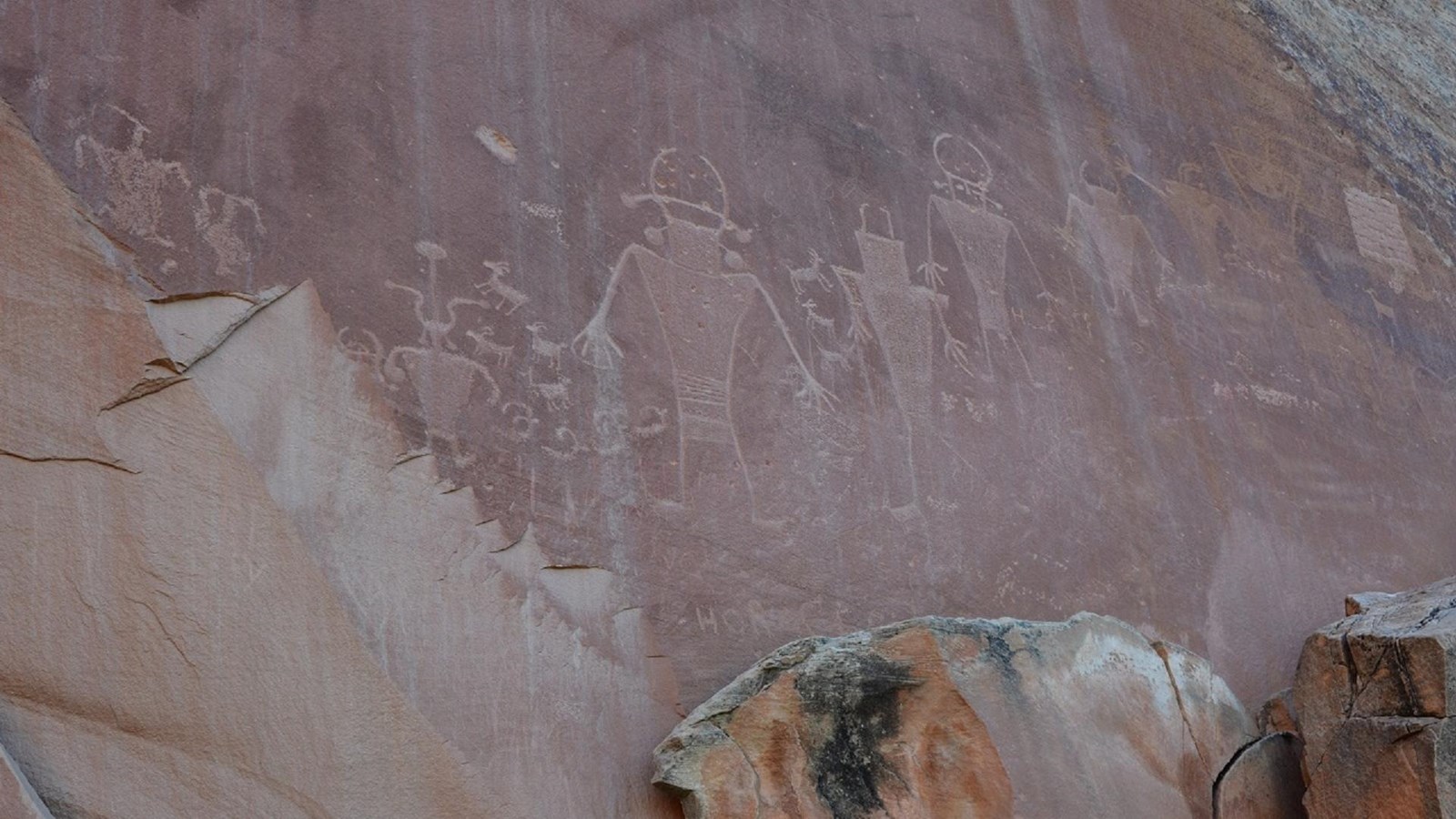(Maik’wuus tuhkoov’un.) Hello my friend. My name is Rick Pickyavit. My Southern Paiute ancestors were roaming and hunting the canyons south of here when white settlers arrived in the 1880s. Long before the Mormon Pioneer, or any tribal memory, other Native American peoples came to know the canyons and cliffs of the Waterpocket Fold. We call them the Fremont Culture, because we don’t know what they called themselves. Unlike my own ancestors, the Fremont people did not move with the changing seasons. They took root in these watered canyons and became farmers as well as huntergatherers. They left few signs, even though they lived here longer than the five centuries between the voyage of Columbus and the present day.
Other people like them lived over the large portion of what is today called Utah. For the most part, the story of the Fremont people can be told only in questions, not answers. How closely these people are related to the better-known pueblo-building Anasazi, no one knows. There are striking differences, as well as similarities. Many archeologists think that Fremont people may be descended directly from ancient nomads called the Desert Archaic. We know a little about the Fremont people’s daily lives from collections of precious artifacts, and something about their hearts and minds from their petroglyphs. We know less, almost nothing, about where they came from or why they left suddenly in the 13th century.
For park visitors, some Fremont Culture petroglyphs can be viewed easily. Caution must always rule in the interpretation of petroglyphs. With few exceptions, we cannot really be sure what the ancient maker of the petroglyphs had in mind. Among serious students, there are some who consider almost all petroglyphs a form of writing, while others consider most of them to be art, not writing. The large trapezoid-shaped human figures excite interest. Many have headgear and horns. Figures are commonly seen with necklaces, earrings and sashes. Animals, especially bighorn sheep, appear in many petroglyphs, and indications are that they were once often hunted and perhaps revered.
Following the disappearance of the Fremont people in the 13th century, no one resided in the Waterpocket Fold country for 500 years. During this time, however; Ute and Southern Paiute hunters and gatherers roamed the region. They lived in close harmony with the natural environment, and left little evidence of their presence. Here in the Fremont River Valley, archeologists first identified the Fremont Culture. As you walk these paths and hidden places, do not even touch the petroglyphs. Protect their legacy, even as I respect it.

